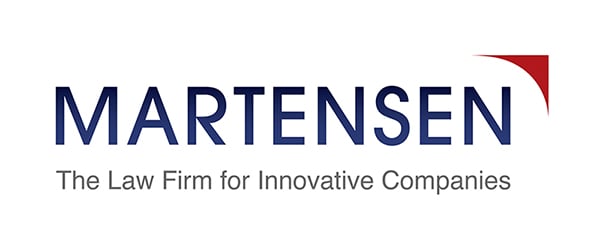Why Inventors Should Choose Patent Counsel Wisely
Did you know that in the U.S., you can legally buy a single-seat ultralight aircraft and attempt to learn to fly it in uncontrolled airspace without a single lesson? But what do you think the odds are that you’ll be able to successfully take off, maneuver and land during that first flight without a mishap, using only online videos and instruction manuals as your training?
Now think about hyper-upscaling that task, were it legal, to a commercial jetliner. Analogously, that is your task when drafting a patent application. And think of your “instruction manual” as the Manual for Patent Examining Procedure (MPEP), the “bible” for patent examiners at the U.S. Patent and Trademark Office (USPTO). As a related aside, the MPEP is over 4,000 pages of smaller-pitch type. Compare this figure to that of an actual bible, roughly 1,200 pages, using standard pitch. This is why the USPTO requires patent professionals who are applying for a patent on another’s behalf to sit for and pass the only federal bar exam in the U.S., the Examination for Registration to Practice in Patent Cases, or less pretentiously, the so-called “Patent Bar.”
As in the above example, if the drafter of your patent application (the patent field’s term-of-art for such a drafter is “patent prosecutor,” and the process for getting a patent is termed “patent prosecution”) doesn’t know what he/she is doing, that ignorance could wind up costing you a lot—maybe even your whole business… or more.
Often, real-world examples drive home the best-remembered points, and this is likely especially true here, given the gravity of mistakes in the field of patents. The following is a brief case study involving one such landmine and why choosing the right patent counsel is critical to helping you avoid it and other threats to your patent rights.
The Subject Matter Eligibility Landmine
“Subject matter eligibility” (SME) is a hot topic in the patent world, nowadays, especially in light of the Federal Circuit’s most recent holding related to the topic. The federal statute governing SME, 35 U.S.C. § 101 – Inventions Patentable (“Sec 101”), states:
Whoever invents or discovers any new and useful process, machine, manufacture, or composition of matter, or any new and useful improvement thereof, may obtain a patent therefor, subject to the conditions and requirements of this title.
Thus, the general rule is that any “new and useful” method, apparatus or composition of matter qualifies as patent-eligible subject matter. Simple, right? But since the landmark Supreme Court case State Street Bank v. Signature Financial Group (1998), a host of cases under both the Supreme Court and the Court of Appeals for the Federal Circuit (CAFC) has morphed this once-simple-to-understand law into a much less certain body of SME jurisprudence known simply as “Alice” (Alice v. CLS Bank, 2014). In Alice, the Supreme Court moved the needle on SME a quantum leap further away from the statute’s humble moorings. As a result, “subject matter eligibility” now connotes a constantly-morphing minefield of judicial doctrine.
American Axle
American Axle & Manufacturing (AAM) is the latest casualty in this minefield. The case involving AAM, American Axle v. Neapco Holdings (“American Axle”), aptly illustrates why patent prosecution is an esoteric practice requiring its own federal bar. Simply put, Sec 101 has morphed into becoming a Swiss army knife – i.e. a universally applicable tool – for federal courts. The risk is that using that “knife” beyond its intended purposes, as here, can lead to legal holdings having potentially unintended consequences in follow-on cases.
This fact is unfortunate, because Sec 101’s scope was initially very straightforward, as the Supreme Court noted in the landmark case, Diamond v. Chakrabarty (1980): “Congress intended statutory subject matter to ‘include anything under the sun that is made by man.’” (quoting a number of Congressional Record entries supporting the Court’s conclusion). Most would likely agree that “anything under the sun that is made by man” is a pretty broad standard.
To be sure, abstract ideas (Alice), natural laws (Mayo v. Prometheus, 2012) and mathematical formulas (Parker v. Flook, 1978), by themselves, are not “made by man.” Had these cases been the extent of the matter, today, SME would be a non-issue. But that’s not what happened. The upshot is that patent prosecutors must develop and practice solid strategies to avoid pitfalls in the dynamic topology of SME.
Here, for example, a brief read of both the specification (or “spec” in patent vernacular—i.e. the written description and the drawings) and the claims in American Axle indicates that each was reasonably well-drafted. The problem is that each was not well-drafted in light of the other. Simply put, “They weren’t made for each other”: The spec describes products and the claims are method-of-manufacturing claims. This is a so-called “enablement” problem, a problem arising out of the requirement that the spec must enable a person of ordinary skill in the art to make and use the invention without “undue experimentation.” But complicating this basic issue is the fact CAFC invalidated AAM’s patent by using Sec 101.
Derailment
Historically, defenses to infringement suits using strategies based on 35 U.S.C. § 112 – Specification (“Sec 112”), by themselves, have largely been unsuccessful. This, of course, includes enablement strategies. In typical, rent-seeking fashion, defendants have thus gravitated toward defenses whose bases aren’t fruitless. After all, patent infringement suits aren’t nicknamed “the sport of kings” for nothing, since the ultimate costs in litigating such suits start at roughly $3-5M and go up. To “cover all bases” in the wake of the federal courts’ conflating Sec 101 with Sec 112 analyses, both sections—along with several others—are usually raised as bases from which to mount a defense. Unfortunately, as a result of the increased scrutiny placed on it, Sec 101 has taken center stage as the section of choice for invalidating patents, swallowing a great deal of Sec 112’s turf with it.
In this case, the “law of nature” referenced by the CAFC panel appears nowhere in AAM’s patent. Yet it is this law, the panel holds, that formed the basis for invalidating AAM’s claims under Sec 101, by inference, as the “natural law” to which “the claims are directed.” The claims are actually directed to a method of manufacturing a vehicle driveshaft, using Hooke’s Law (“…a natural law that mathematically relates the mass and/or stiffness of an object to the frequency with which that object oscillates (vibrates)”) to attenuate driveshaft vibration. Hence, the claims are not directed to Hooke’s Law, rather, they are directed to a practical application of that law—i.e. to patent-eligible subject matter. Moreover, the method employs more than just a one-time, simple application of this natural law, but instead applies the law’s principles in a complicated process to attenuate multiple oscillation modes.
Getting Back On-Track
Fortunately, one member of the panel – Judge Kimberly A. Moore – highlighted the path to getting the “enablement” train back on its proper tracks under Sec 112. The rationale undergirding Judge Moore’s dissent is simple: The standard strategies for drafting and prosecuting applications should work without fear of stepping on a Sec 101 landmine. These strategies are philosophically easy to grasp, as well: 1) complete, thorough disclosures are a must—more detail is better than less (this maxim has become especially true over the past decade or so); 2) the claims must be enabled by the spec—if the subject matter in the claims is not enabled by the spec, it’s a show-stopper; and 3) the spec and the claims must be consonant with one another.
But absent an understanding of the inner workings of why the AAM patent was invalidated (that is, without an understanding of “what is really going on, here”), many patent prosecutors—patent agents and patent attorneys, alike—missed these critical “how” pieces, and will likely avoid making the same mistake in their own patent practice only as a result of sheer luck. Indeed, after American Axle, many clients will not know whether their counsels’ prosecution strategies will be successful until they arrive at a very expensive future point, during an infringement proceeding. That’s a pretty expensive roll of the dice.
Takeaways
American Axle is another unfortunate bend in the Sec 101 tracks, but good patent attorneys understand why the CAFC panel arrived at its holding and, using that insight, how to keep their clients from becoming just another Sec 101 statistic. Further, American Axle is most certainly not the end of the Sec 101 controversy. This means patent practitioners must stay abreast of the implications of cases like American Axle and adjust their strategies to incorporate the lessons learned from those insights others likely will have missed.
The lesson from this article’s introduction is that “going it alone” as a patent prosecution strategy is unwise. But beyond this obvious caution, not all those registered to practice before the USPTO are of equal value to a potential client. The further lesson illustrated by American Axle is, when choosing patent counsel to represent you and your patent application before the USPTO, ask yourself, “Do I think this particular patent practitioner stays on top of the latest legal insights in patent law that will likely bear on my application? Further, do I think he/she is able to successfully apply those insights so that a strong, issued patent certificate ultimately winds up in my hands?” If the answer to either of these questions is, “No” or “I’m not sure,” you need to look for better patent counsel.



